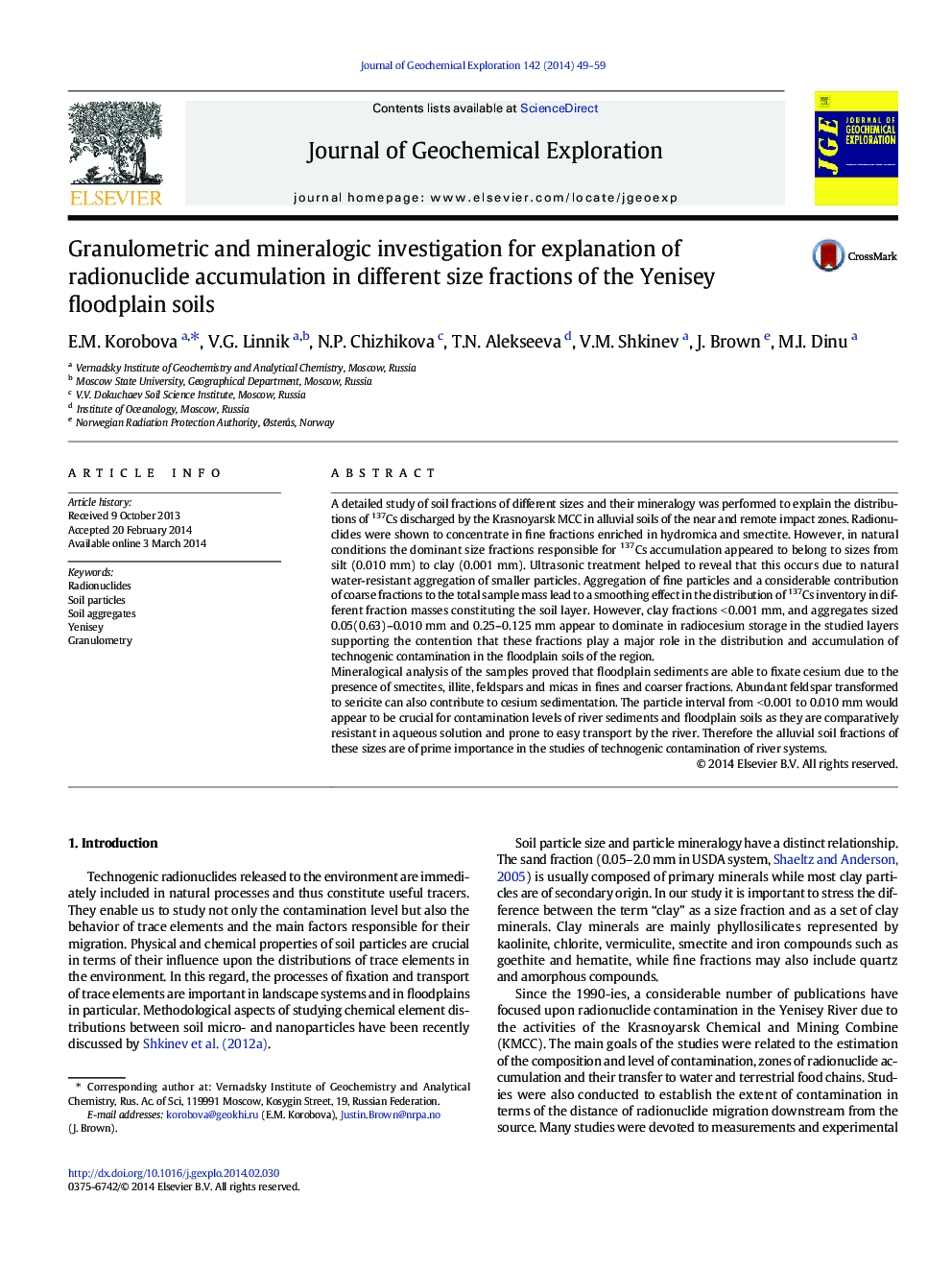| کد مقاله | کد نشریه | سال انتشار | مقاله انگلیسی | نسخه تمام متن |
|---|---|---|---|---|
| 4457402 | 1620915 | 2014 | 11 صفحه PDF | دانلود رایگان |
• Granulometric and aggregate state of contaminated floodplain soils was determined.
• Rradionuclide accumulation in silt and coarser fractions explained by aggregation.
• Three main fractions responsible for radionuclide accumulation were revealed.
• Particle size interval < 0.001–0.010 mm was crucial for radionuclide concentration.
A detailed study of soil fractions of different sizes and their mineralogy was performed to explain the distributions of 137Cs discharged by the Krasnoyarsk MCC in alluvial soils of the near and remote impact zones. Radionuclides were shown to concentrate in fine fractions enriched in hydromica and smectite. However, in natural conditions the dominant size fractions responsible for 137Cs accumulation appeared to belong to sizes from silt (0.010 mm) to clay (0.001 mm). Ultrasonic treatment helped to reveal that this occurs due to natural water-resistant aggregation of smaller particles. Aggregation of fine particles and a considerable contribution of coarse fractions to the total sample mass lead to a smoothing effect in the distribution of 137Cs inventory in different fraction masses constituting the soil layer. However, clay fractions < 0.001 mm, and aggregates sized 0.05(0.63)–0.010 mm and 0.25–0.125 mm appear to dominate in radiocesium storage in the studied layers supporting the contention that these fractions play a major role in the distribution and accumulation of technogenic contamination in the floodplain soils of the region.Mineralogical analysis of the samples proved that floodplain sediments are able to fixate cesium due to the presence of smectites, illite, feldspars and micas in fines and coarser fractions. Abundant feldspar transformed to sericite can also contribute to cesium sedimentation. The particle interval from < 0.001 to 0.010 mm would appear to be crucial for contamination levels of river sediments and floodplain soils as they are comparatively resistant in aqueous solution and prone to easy transport by the river. Therefore the alluvial soil fractions of these sizes are of prime importance in the studies of technogenic contamination of river systems.
Journal: Journal of Geochemical Exploration - Volume 142, July 2014, Pages 49–59
